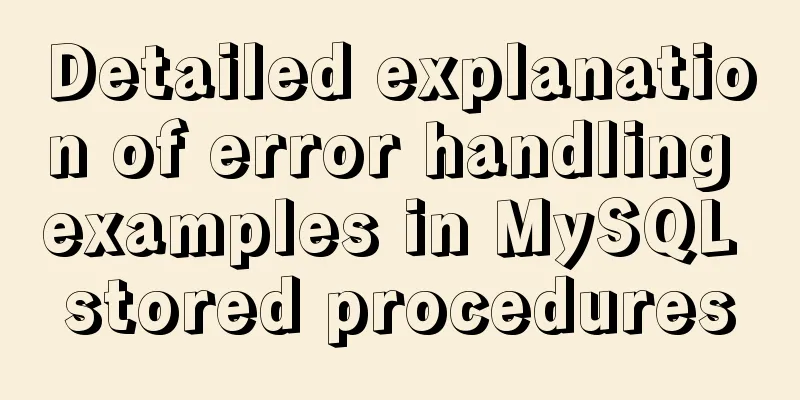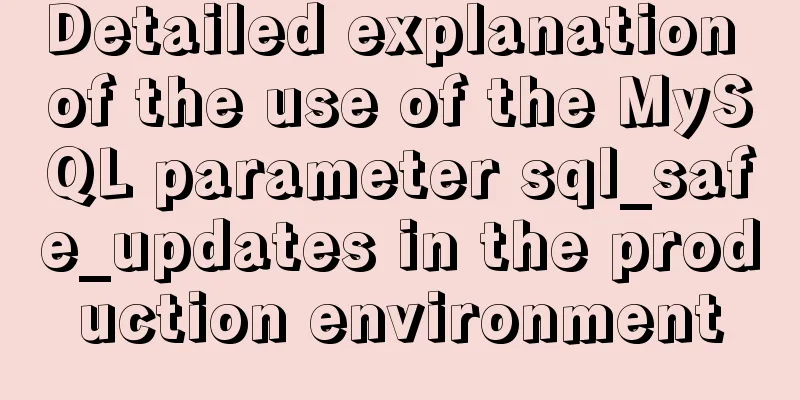How to use Navicat to operate MySQL

Preface:In the daily use of MySQL, we may often use visual tools to connect to MySQL, among which Navicat is the most commonly used one. Sometimes I encounter students asking questions like how to install and use Navicat. In this article, the author will share a simple tutorial on how to use Navicat to operate MySQL based on personal experience. 1. Introduction to NavicatNavicat is a mature and reliable database management tool that is deeply loved by technicians. It is built with an intuitive graphical user interface that allows you to create, organize, access and share information in a secure and easy way. Navicat can be used to manage and develop local or remote MySQL, SQL Server, SQLite, Oracle and PostgreSQL databases. It can run on three operating systems: Windows, macOS, and Linux, and can provide functions such as data transfer, data synchronization, structure synchronization, import, export, backup, restore, report creation tools and plans to assist in data management. There are many versions of Navicat in the market, which can be roughly divided into Navicat Premium that can connect to multiple data sources and Navicat for MySQL for a single data source. However, the differences between the different versions are not significant. 2. Simple tutorial sharingFirst of all, I would like to point out that the genuine version of Navicat is paid software, and the installation and cracking methods will not be explained here. Connection ManagementSelect New Connection, fill in the IP, port, account and password to create a new database connection. If you want to log in with a different account, you can click Copy Link, and the IP port will be automatically filled in. You only need to change the account and password. Connection management is pretty easy to get started with.
Library table operationSelect the corresponding database table, right-click and select the corresponding operation, which is similar to writing SQL. But be careful not to make any mistakes, especially make sure to look carefully when clicking delete. To clear a table means delete from, and to truncate a table means truncate.
Query WindowThe query window is often used. Select the corresponding library and click New Query to open the query window. In the query window, we can execute our custom SQL statements, but here is a reminder, do not put multiple SQL statements in one query window. It is best to select a SQL statement and then click Execute. When the SQL is long, you can click Beautify SQL to make it more readable. Clicking the Explain button can also display the execution plan of the SQL.
Filter table dataWhen we open a table and find that there is a lot of data in the table, we can click Filter and select appropriate conditions to filter out the required data. Sometimes you want to be lazy and don't want to write SQL, you can try this function.
Run and dump SQL filesSelect the corresponding library and click Run SQL File to select the local file for execution. Select a library or table and click Dump SQL File to back up the corresponding library or table. You can also choose to back up only the structure. It is recommended to back up the database before operating it.
Import and Export WizardIf you have Excel data that you want to import into a table, or want to export data from a table to Excel format, you can select the table, choose Import Wizard or Export Wizard, and follow the prompts step by step to complete it. However, it is generally suitable for small amounts of data.
View Page SettingsClick the viewing bar above to select different ways to display the page. It is recommended to select detailed information so that you can clearly see the relevant information of each table. The creation statement of the table can be viewed in the right sidebar.
Tool Target BarClick on the toolbar above to find more practical tools. Data transfer, data synchronization, and structure synchronization allow you to migrate data quickly and easily at a low cost. Also transfers data between various database management systems.
Summarize:Navicat has many other functions, such as account and permission management, database model design, etc. The above are just some of the functions I often use. Tools are only to improve efficiency, but the premise of all this is that we are familiar with the database and the tools we use. Be careful when using unfamiliar functions, as they may damage the database. Combining the command line with visualization tools is also a good choice. The above is the details of how to use Navicat to operate MySQL. For more information about using Navicat to operate MySQL, please pay attention to other related articles on 123WORDPRESS.COM! You may also be interested in:
|
<<: Design Tips: We think you will like it
>>: Detailed explanation of this pointing in JS arrow function
Recommend
HTML solves the problem of invalid table width setting
If you set the table-layer:fixed style for a tabl...
How to install common components (mysql, redis) in Docker
Docker installs mysql docker search mysql Search ...
What to do if you forget the initial password of MySQL on MAC
The method to solve the problem of forgetting the...
mysql8.0.0 winx64.zip decompression version installation and configuration tutorial
This article records the installation tutorial of...
Sublime Text - Recommended method for setting browser shortcut keys
It is common to view code effects in different br...
Introduction to JWT Verification Using Nginx and Lua
Table of contents Preface Lua Script nignx.conf c...
jQuery achieves full screen scrolling effect
This article example shares the specific code of ...
MySQL million-level data paging query optimization solution
When there are tens of thousands of records in th...
Detailed explanation of Nginx proxy_redirect usage
Today, I encountered a little problem when I was ...
MySQL slow query log configuration and usage tutorial
Preface MySQL slow query log is a function that w...
Element UI table realizes drop-down filtering function
This article example shares the specific code for...
Detailed process of creating a VR panoramic project using React and Threejs
Recently, I'm learning to use React with Thre...
File upload via HTML5 on mobile
Most of the time, plug-ins are used to upload fil...
How to use Element in React project
This is my first time using the element framework...
Docker batch start and close all containers
In Docker Start all container commands docker sta...


















